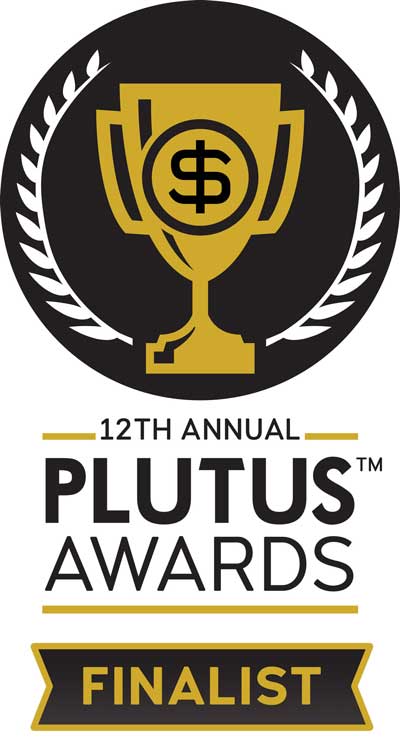Our current portfolio is mostly traditional investments, including paper assets and rental real estate. However, we currently have about 5% of our money in two private loans: one to fund a fix and flip; and another to fund a growing start-up. We have considered other alternative investments (such as a coffee farm in Panama or special use facilities, like assisted living), but so far we have passed.
Recently, we have been approached to lend on another deal. The intermediary who made the introduction is someone we know, but the end borrower we do not. As we go through the process of vetting this potential deal, I thought it would be helpful to write about it and thus review what makes a good deal versus something we would pass on. Remember, the below analysis is only what makes sense FOR US (any other individual needs to make their own assessment based on their specific criteria and life circumstances).
We always start with the people behind the deal
Our very first private loan was in 2017, and it was to someone we didn’t know personally. However, this was an experienced real estate developer whose work I had been following. We spoke to the developer several times and vetted three references, all of whom had lent amounts exceeding what we were considering. We ended up lending to this borrower for over two years, from 2017-2019, and only stopped because they started consolidating their loans and only wanted to do deals at a higher loan amount than what we felt comfortable lending.
In 2019, we lent to two more borrowers, both of whom we knew through prior business. One borrower is an experienced contractor whose work we knew firsthand as a buyer of one of their fix and flips. We had done well on that deal (and continue to own the rental property) so we were comfortable expanding our work together. We are now lending to them on deals they are rehabbing for other investors.
The other borrower is someone who helped set up our solo 401k. Again, we were happy with that work (and continue to use his company to administer our account) so whenever the company promotes a deal we check it out. Since their primary business is setting up retirement accounts for businesses, they see a lot of businesses and sometimes mention potential deals to their broader audience.
After vetting the people, we look at terms – interest rate, duration and collateral

Once we’re comfortable with the borrower, we look at the actual deal. For the 2017-2019 developer partner we lent to, we liked that the underlying real estate collateral was in a growing market (Arizona) and in a growing segment (high-end retirement living). The note was collateralized by sufficient equity in the property – even if the retirement community didn’t fully rent out, our principal was easily covered by selling off the land and structures. It was a chance to invest in a geography we were interested in and a real estate area we believed in without actually getting into that business firsthand.
For the 2019 rehabber we started lending to, each loan is for a single property, so each loan is different. The interest rate is the same but the amount of the loan can vary by over $100k, and the duration of the loan varies based on how long the rehab and flip takes to complete. We agree to lend on a deal-by-deal basis, and we don’t do every single loan this rehabber brings us – only those where the underlying collateral is something we don’t mind taking over if the borrower can’t exit the deal.
For the solo 401k partner, again we decide to make a loan deal by deal. This partner raises money on all sorts of deals. We picked the loan we made based on the fact that we believed in the underlying business – it’s ability to repay and it’s proposed exit strategy (we get a little bit of a bonus on top of the interest paid if they have a successful exit). In this way, the deal isn’t a straight loan in that it’s components include interest paid monthly, principal payback at the end of the term and also a potential bonus.
We are still researching the components of this current proposal
As I mentioned earlier, the latest borrower we’re considering is someone we don’t know. Therefore, some of the things we’re looking at include:
- What is their real estate experience? This is a BRRR (buy, rehab, rent, refinance) deal so first we need to feel comfortable that this person can deliver on the rehab and successfully rent out the property. The person who introduced us would be the contractor and the property manager on this deal, so that’s a positive on our checklist.
- What is their credit profile? For that third “R”, we need to know this person can get approved for a cash-out refinance to pay us back. I don’t have a full credit picture yet, but the credit score is strong – another positive.
- How does working with this borrower compare to other deals we’re considering? One of our loans is coming due soon, so we will have additional money to lend. It would be nice to add another lender option to our portfolio, especially if this person may do more deals. In this case, it’s a relatively new investor so I have no idea if they can become a reliable deal pipeline for us. One mitigating factor is that the contractor/ PM who introduced the deal to us is an experienced investor in growth mode, so if not this borrower, they may have other borrowers we can deal with. Net-net, this seems like a neutral issue (can go positive or negative) so far.
In addition, we have to consider the terms of the deal, including:
- How much is the loan amount? Based on the initial deal sheet we’ve seen, the amount would be on the high end of what we prefer to lend. That’s not ideal for a first time with this lender, so I’m tilting negative here.
- How long will it take from closing the deal to the cash-out refinance at the end? We prefer to turn over our money quickly. Since this borrower is looking to keep and rent, rather than sell/flip, the BRRR deal will likely take longer to finish, so this is a negative for us.
- How much of an interest rate can we charge? We know that our minimum is already agreed upon, but we may have to increase that, or charge points, depending on the other risk factors (like a large loan amount or longer than ideal duration). This is an unknown we will explore this further if everything else checks out.
Risk management will dictate our final decision

I don’t know if we’re taking this deal because there are still too many unknowns. That said, it will come down to how much risk we are willing to take on.
We know the underlying property, and it is something we could see making work as a rental if necessary – so ultimately we have that protection. But there are other things we could do with the loan amount – e.g., buy more paper assets, buy more rental real estate, lend to someone else, add to our reserves. Depending on what we learn about the borrower and the deal, those other alternatives may make more sense on a risk-adjusted return perspective. We’ll keep you posted.
Would you do this deal? What other factors would you consider?


 We are Scott and Caroline, 50-somethings who spent the first 20+ years of our adult lives in New York City, working traditional careers and raising 2 kids. We left full-time work in our mid-40’s for location-independent, part-time consulting projects and real estate investing, in order to create a more flexible and travel-centric lifestyle.
We are Scott and Caroline, 50-somethings who spent the first 20+ years of our adult lives in New York City, working traditional careers and raising 2 kids. We left full-time work in our mid-40’s for location-independent, part-time consulting projects and real estate investing, in order to create a more flexible and travel-centric lifestyle.  Financial independence and early retirement is not something we originally focused on, but over time realized it was possible. Our free report,
Financial independence and early retirement is not something we originally focused on, but over time realized it was possible. Our free report, 



